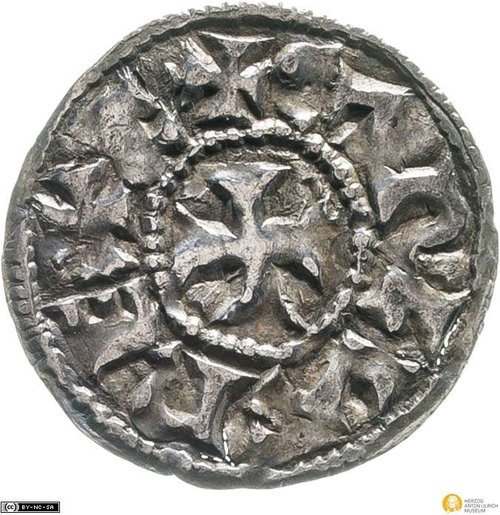Möglicherweise wurde das Zeichen X in die Umschrift METVLLO eingefügt, um die Münzen der Münzstätte Poitiers zu kennzeichnen; vgl. MEC 1, S.238f. Diese Prägungen begannen unter Karl dem Kahlen, wurden dann aber in einem groberen Stil Ende des 9. und wohl noch im 10.Jh. fortgesetzt; vgl. MEC 1, S.544. Das vorliegende Stück ist vom Stil her offensichtlich später.
Vorderseite: Kreuz.
Rückseite: Karolus-Monogramm.
en
















